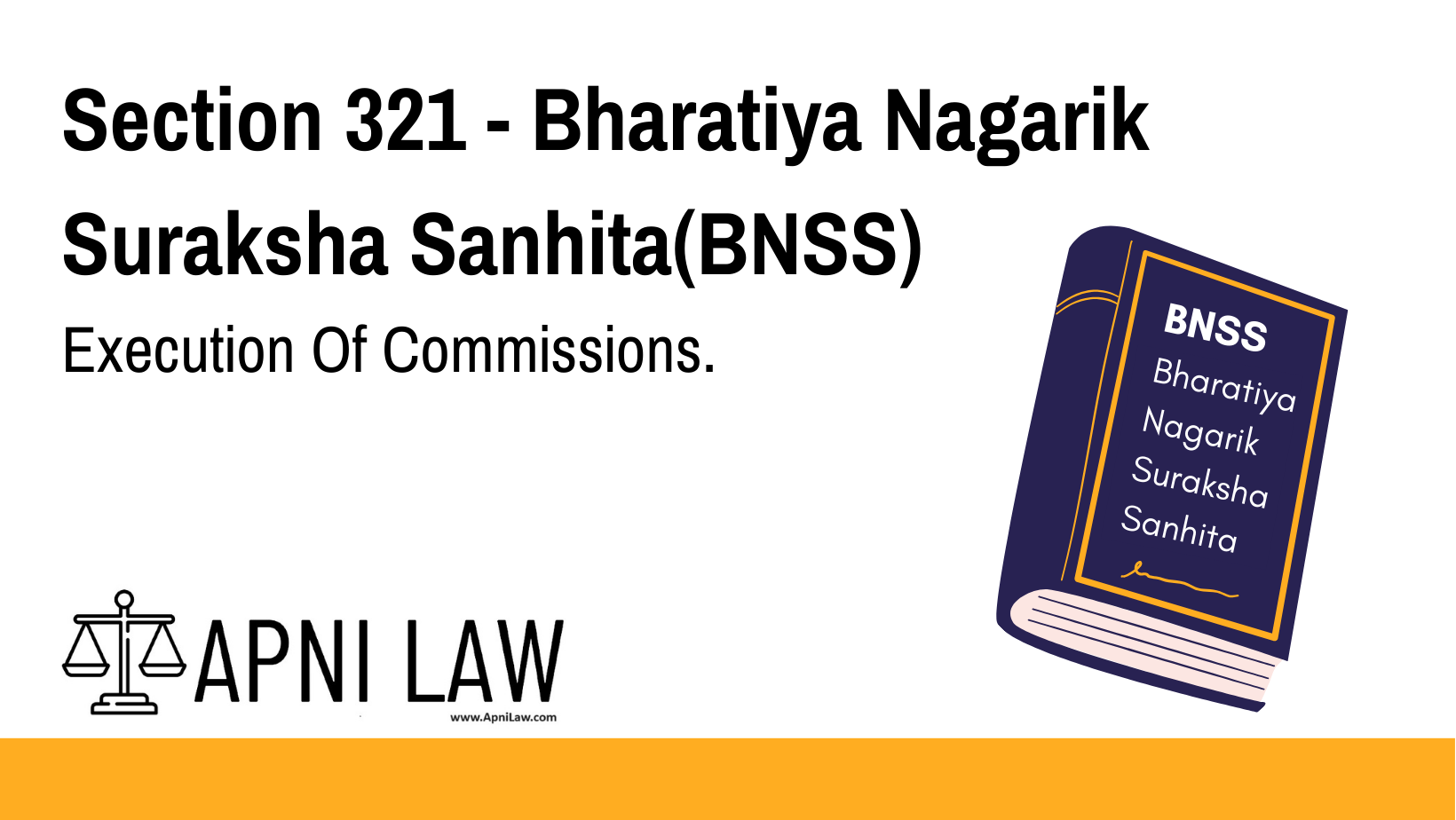Code: Section 321 BNSS
321.
Upon receipt of the commission, the Chief Judicial Magistrate or Judicial Magistrate as he may appoint in this behalf, shall summon the witness before him or proceed to the place where the witness is, and shall take down his evidence in the same manner, and may for this purpose exercise the same powers, as in trials or warrant-cases under this Sanhita.
Explanation of Section 321 BNSS
Section 321 BNSS outlines the procedure to be followed once a commission is received. This section mandates that the Chief Judicial Magistrate or a Judicial Magistrate appointed for this purpose must act promptly to ensure that the witness is available for examination. The key components include:
- Summoning the Witness:
Upon receiving the commission, the Magistrate is required either to summon the witness to the court or to go to the location where the witness is present. - Recording the Evidence:
The Magistrate must record the witness’s evidence in the same manner as is done in trials or warrant-cases under this Sanhita. This ensures that the process of taking evidence remains consistent and follows established legal protocols. - Exercise of Powers:
In executing these duties, the Magistrate is empowered with the same authority as used in regular trials or warrant-cases, thereby ensuring that the witness’s testimony is obtained in a legally robust and enforceable manner.
This section ensures that once a commission is issued, there is a clear and standardized procedure for obtaining and recording the testimony of a witness, which forms an essential part of the judicial process.
Illustration
Example 1: Summoning the Witness to Court
In a criminal case, a commission is issued for the examination of a key witness. Upon receipt of the commission, the Chief Judicial Magistrate summons the witness to the court. The witness appears, and the Magistrate records the testimony in a manner identical to that followed in a typical trial, ensuring that the evidence is formally documented and can be used later in the proceedings.
Example 2: Magistrate Proceeds to the Witness’s Location
In another instance, a witness is located in a remote area. Instead of waiting for the witness to come to court, the Judicial Magistrate, as appointed by the Chief Judicial Magistrate, travels to the witness’s location. The Magistrate then takes down the witness’s evidence on the spot, using the same procedures as in court trials, thereby ensuring that the evidence is accurately recorded and preserved for the case.
Common Questions and Answers on Section 321 BNSS
1. Who is responsible for summoning the witness once the commission is received?
- Answer:
The Chief Judicial Magistrate or a Judicial Magistrate appointed by him is responsible for summoning the witness or proceeding to the witness’s location.
2. How is the evidence of the witness recorded under this section?
- Answer:
The evidence is taken down in the same manner as in trials or warrant-cases under this Sanhita, ensuring that it is recorded according to standard legal procedures.
3. Can the Magistrate use the same powers as in a trial when taking evidence under a commission?
- Answer:
Yes, the Magistrate is empowered to exercise the same powers as those used in trials or warrant-cases, ensuring that the process of taking evidence is thorough and legally compliant.
4. What happens if the witness is not available in the court?
- Answer:
If the witness is not available in the court, the Magistrate is required to proceed to the place where the witness is located and take down the evidence there.
Conclusion
Section 321 BNSS establishes a clear and efficient procedure for the summoning and recording of a witness’s evidence once a commission is issued. By empowering the Chief Judicial Magistrate or an appointed Judicial Magistrate to either summon the witness to the court or travel to the witness’s location, and by mandating that the evidence be recorded in the same manner as in formal trials, this provision upholds the integrity and consistency of the judicial process. For more detailed legal insights and guidance on evidentiary procedures under this Sanhita, visit ApniLaw.












Great point! Under Section 321, there are key provisions that impact this issue significantly. It’s important to ensure that these regulations are applied fairly and equitably. Have you seen any recent updates or interpretations of Section 321 that might change its impact?